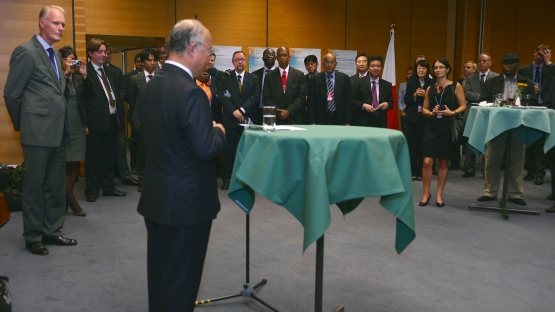At the IAEA 56th General Conference, the Permanent Missions of Sweden and Japan to the IAEA hosted an event on Wednesday 19 September 2012 to raise awareness of a large scale regional IAEA Technical Cooperation project that aims to improve water management in the Sahel region.
Persistent droughts in the Sahel region have led to a humanitarian crisis. Around 1.5 million children are facing severe malnutrition and risk death from starvation or disease. Most available fresh water in region is located in underground aquifers but the information on these resources is still inadequate. The lack of this information greatly affects sound decision making regarding sustainable development and management of this scarce resource. A collaborative approach to dealing with water management is essential, both between the participating countries and the participating partner organizations.
In June this year, the IAEA initiated a regional long-term project - with thirteen participating countries - that aims to enhance these countries' knowledge and understanding of the five large transboundary aquifers that they are sharing in the Sahel region. The project will support information and technology sharing as well as capacity building. Ultimately, the availability of reliable and coherent information about the Sahelian aquifers will form the basis for the joint management of these precious resources.
The project is expected to help countries to fill gaps in basic hydrological information about these aquifers, to transfer technical expertise in the use of groundwater-relevant nuclear techniques, and to enable countries to participate as equal partners in the assessment of these aquifers. The four-year project is being undertaken with partners such as UNESCO, JICA, and the Sahara and Sahel Observatory and has so far benefited from the generous financial support of Sweden, Japan and the United States of America.
Background
The Sahel is a region that stretches across the African continent from the Atlantic Ocean to the Red Sea. It is a band of land up to 1 000 kilometres wide, over 5 400 kilometres long, and is located between the Sahara to the north and the savannas to the south. The Sahel crosses the territory of Senegal, Mauritania, Mali, Algeria, Niger, Chad, Sudan, South Sudan and Eritrea.



